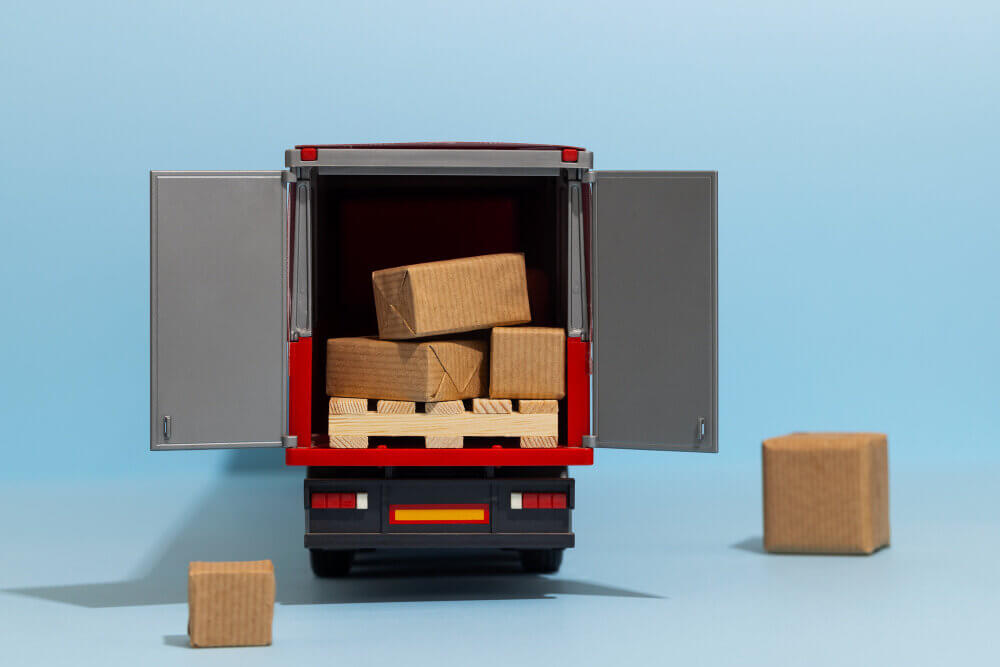
LTL (Less Than Truck Load) refers to a shipping method used in the transportation industry when the shipment does not require a full trailer or truckload of space.
LTL shipments are typically smaller, ranging from a few hundred pounds to a few thousand pounds, and they are consolidated with other LTL shipments to maximize efficiency and minimize costs.
Difference between Less Than Truck Load (LTL) and Truckload:
Shipment Size
LTL shipments are smaller and do not require a full truckload of space, whereas truckload shipments occupy the entire trailer.
Cost
LTL shipments are cost-effective as the shipping costs are divided among multiple shippers sharing the same truck. Truckload shipments are generally more expensive since the entire truck is dedicated to one shipment.
Frequency
LTL shipments are suitable for businesses that have smaller or more frequent shipments, while truckload shipments are more suitable for larger, less frequent shipments.
Transit Time
LTL shipments typically have longer transit times due to multiple stops for pick-up and delivery, as the truck is carrying various shipments. Truckload shipments usually have shorter transit times as they go directly from the point of origin to the destination without intermediate stops.
How Less Than Truckload (LTL) Works?
Shipment Pickup:
The LTL carrier arranges to pick up the shipment from the shipper’s location. The carrier may use a local terminal or arrange a pickup with a local partner.
Shipment Consolidation:
The carrier collects multiple LTL shipments from different shippers and consolidates them at a regional hub or terminal. This consolidation maximizes efficiency by filling the available trailer space.
Linehaul Transportation:
Once the LTL shipments are consolidated, they are loaded onto a long-haul truck and transported to a regional hub or terminal near the destination area.
Shipment Distribution:
At the regional hub or terminal, the consolidated LTL shipments are sorted and loaded onto local delivery trucks for final distribution to their respective destinations.
Final Delivery:
The local delivery trucks complete the delivery of individual LTL shipments to their final destinations.
Benefits of Less Than Truck Load Freight:
Cost Savings:
LTL freight allows businesses to share the transportation costs with other shippers, making it more cost-effective compared to using a full truckload for smaller shipments.
Improved Efficiency:
LTL carriers optimize the use of trailer space by consolidating multiple shipments, reducing wasted space, and increasing efficiency.
Flexibility:
LTL shipments offer greater flexibility as they accommodate smaller loads. Shippers can send smaller shipments more frequently, adjusting to their specific needs.
Reduced Carbon Footprint:
LTL shipments help reduce the number of trucks on the road by consolidating shipments. This leads to a smaller carbon footprint and lower emissions.
Access to the Freight Network:
Utilizing LTL services provides access to a vast network of terminals and delivery points, making it easier to reach various destinations.
Tracking and Visibility:
LTL carriers often provide tracking and visibility tools, allowing shippers to monitor the status and location of their shipments throughout the transit process.
Overall, LTL freight provides a cost-effective and efficient solution for businesses with smaller or more frequent shipments, offering various benefits such as cost savings, flexibility, and improved environmental sustainability.
Example:
Let’s say you operate a small online store that sells handmade candles. Every week, you receive orders from various customers, each consisting of a few boxes of candles. Instead of renting an entire truck for these small orders, you opt for LTL (less than truckload) shipping.
This means that your candle boxes are combined with shipments from other businesses that also have smaller loads to ship. By sharing the truck space and transportation costs with other shippers, you can reduce expenses.
The LTL carrier picks up your boxes, combines them with other shipments at a central location, and then delivers them to their respective destinations. This cost-effective approach allows you to save money on shipping while efficiently getting your candles to your customers.
Frequently Asked Questions:
- How is the cost calculated for LTL shipping?
The cost of LTL shipping is typically determined based on factors such as shipment weight, dimensions, distance, and any additional services required.
- Can I track my LTL shipment?
Yes, most LTL carriers provide tracking and visibility tools that allow you to monitor the status and location of your shipment throughout the transit process.
- Question
answer
